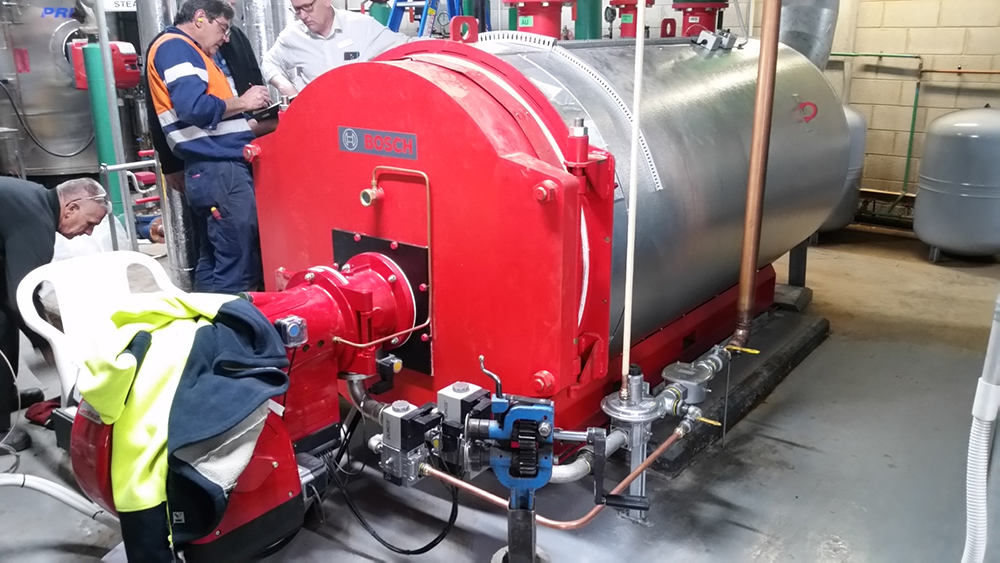Steam boilers play a dynamic role in many Australian industries and because of this, optimising energy usage is not only a matter of environmental responsibility, but a crucial factor in economic sustainability. As steam boilers are fundamental to various processes, they actually offer significant opportunities for energy improvements. This month, we explore key tips and strategies for industries in Australia to enhance the energy efficiency of their steam boilers. From innovative technologies to steam boiler maintenance, these insights are designed to guide industry and operators towards more cost-effective and sustainable steam boiler usage.
1: Optimal Combustion Control
A fundamental component to energy-efficient steam boiler operation is efficient combustion. Regular inspections and maintenance ensure that boilers are clean and functioning optimally. You can also consider upgrading to advanced combustion controls which allow for precise monitoring and adjustment of the air-to-fuel ratio , 02 trim, variable speed drives and improving burner turndown. This minimises fuel wastage and maximises the energy extracted from the fuel, which in turn contributes to overall efficiency.
2: Implement Heat Recovery Systems
Heat recovery systems capture and reuse waste heat from various processes, significantly boosting energy efficiency. Incorporating these systems into steam boiler operations allows industries to utilise excess heat for preheating feedwater, space heating, or even electricity generation. Common heat recovery methods include condensing economisers and flue gas heat exchangers. By extracting additional energy from the combustion process, industries can reduce their reliance on external energy sources and enhance the overall steam boiler efficiency.
3: Upgrade to High Efficiency Boilers
It is also worth considering upgrading to high-efficiency boilers which are designed to optimise fuel utilisation and minimise heat losses. Modern boilers often incorporate advanced technologies, like condensing heat exchangers. These boilers are designed to achieve higher thermal efficiency, which translates into lower fuel consumption and operating costs. The long-term savings and environmental benefits make these high-efficiency boilers a smart strategic choice for those committed to boiler energy efficiency.
4: Optimise Boiler Load
Steam boilers are most efficient when they are operating at or near their rated capacity. Running boilers at partial loads for extended periods can lead to inefficiencies and increased energy consumption. Implement strategies to optimise boiler load, such as sequencing multiple boilers for better matching of load demands or incorporating variable frequency drives (VDFs) to modulate burner output based on demand. By aligning boiler operation with actual load requirements, industries can avoid unnecessary energy consumption and enhance overall system efficiency.
5: Invest in Energy-Efficient Controls
Upgrading to advanced control systems can significantly improve the energy efficiency of steam boilers. Programmable Logic Controllers (PLCs) and advanced automation systems allow for precise control over various parameters. These systems enable better control over fuel and air flow, combustion rates, and temperature, and they are also capable of matching boiler operation with actual demand. Integrate smart controls with real-time monitoring and data analytics and this further enhances the ability to identify inefficiencies, which in turn contributes to energy savings.
6: Real Time Monitoring and Data Analytics
When real time monitoring is combined with data analytics, this empowers industries to gain insights into boiler performance and also identify opportunities for improvement. These systems provide key metrics such as fuel consumption, emissions, and efficiency. By analysing this data, operators can pinpoint inefficiencies, track the impact of operational changes, and implement targeted improvements. This data driven approach allows for continuous optimisation, ensuring that steam boilers operate at peak efficiency levels, and supporting a culture of ongoing improvement.
7: Regular Inspections and Maintenance
The foundation of energy efficiency in steam boilers lies in proactive inspections and regular maintenance. Smaller issues such as scaling, leaks, or malfunctioning components actually greatly impact efficiency over time. That’s why scheduled maintenance is essential, and should include cleaning and part replacement. In turn, regular inspections should encompass the boiler itself, as well as associated components such as burners, controls, and safety devices. Addressing potential problems promptly is critical to maintaining boiler performance and safety, and to avoiding energy wastage.
Do You Need Professional Steam Boiler Maintenance?
Look no further than Tomlinson Energy Service. We are backed by over 100 years of engineering and service experience, and we understand the critical importance of steam boiler maintenance. We are proud to provide you with unparalleled experience in boiler maintenance, repair, and installation and when you need to purchase a steam boiler, we are ready to help with that too.
When you need boiler maintenance, repair, or installation, call us at your state-specific telephone number, or fill out our online contact form and we will take care of your enquiry.






